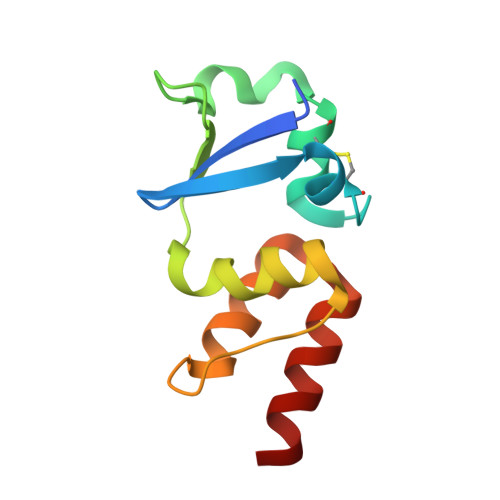Pentameric assembly of potassium channel tetramerization domain-containing protein 5.
Dementieva, I.S., Tereshko, V., McCrossan, Z.A., Solomaha, E., Araki, D., Xu, C., Grigorieff, N., Goldstein, S.A.(2009) J Mol Biol 387: 175-191
- PubMed: 19361449
- DOI: https://doi.org/10.1016/j.jmb.2009.01.030
- Primary Citation of Related Structures:
3DRX, 3DRY, 3DRZ - PubMed Abstract:
We report the X-ray crystal structure of human potassium channel tetramerization domain-containing protein 5 (KCTD5), the first member of the family to be so characterized. Four findings were unexpected. First, the structure reveals assemblies of five subunits while tetramers were anticipated; pentameric stoichiometry is observed also in solution by scanning transmission electron microscopy mass analysis and analytical ultracentrifugation. Second, the same BTB (bric-a-brac, tramtrack, broad complex) domain surface mediates the assembly of five KCTD5 and four voltage-gated K(+) (Kv) channel subunits; four amino acid differences appear crucial. Third, KCTD5 complexes have well-defined N- and C-terminal modules separated by a flexible linker that swivels by approximately 30 degrees; the C-module shows a new fold and is required to bind Golgi reassembly stacking protein 55 with approximately 1 microM affinity, as judged by surface plasmon resonance and ultracentrifugation. Fourth, despite the homology reflected in its name, KCTD5 does not impact the operation of Kv4.2, Kv3.4, Kv2.1, or Kv1.2 channels.
Organizational Affiliation:
Department of Pediatrics and Institute of Molecular Pediatric Sciences, University of Chicago, Chicago, IL 60637, USA.














